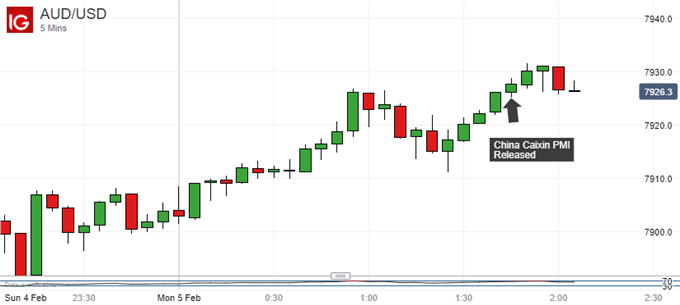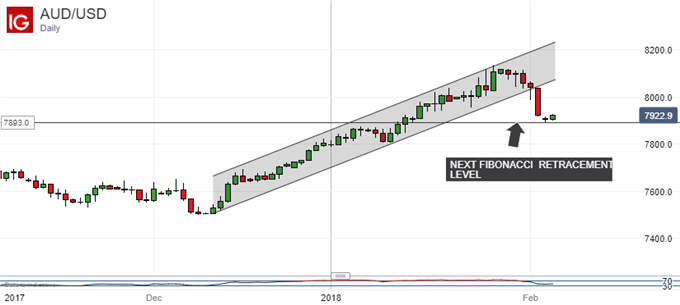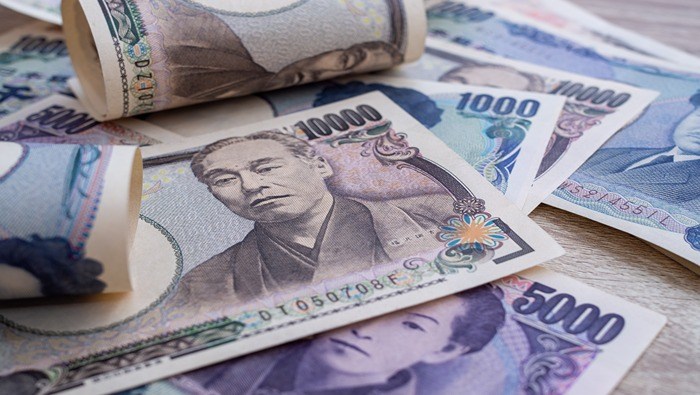Talking Points:
- The Chinese service sector sailed in to 2018 in robust form
- Australia’s inflation ticked up in January, as did job advertisement levels
- The Australian Dollar rose on this news, but the market remains very wary
What do retail foreign-exchange investors make of the Australian Dollar’s prospects? Find out at the DailyFX Sentiment Page
The Australian Dollar got only a modest boost Monday following news that China’s private sector service output expanded at its fastest pace for nearly six years in January.
The Caixin Purchasing Managers Index came in at 54.7, above an expected 53.5 and December’s 53.9. Coupled with the manufacturing survey already released this lead to a composite PMI of 53.7. In the logic of PMIs any reading above 50 signifies expansion for the sector in question and January’s service headline was the joint strongest seen since October 2010. Markit compiles the survey with Chinese media group Caixin. It said that the services sphere started 2018 in pretty good shape overall, but that there were still question marks over the durability of demand for manufacturing.
The Australian Dollar ticked up a little, having already gained Monday after data from Australia and New Zealand Bank showing a marked pickup in job advertisements. They rose 6.2% on the month after a 2.7% fall in December. That fall may well have been seasonal however as the Australian job markets is quite strong and has been for some months. A private monthly measure of inflation also picked up, rising 0.3% on the month from a 0.1% gain previously.
China is never far from Australian Dollar investors’ minds given the importance of its raw-material demand to Australia’s export machine. Chinese data have spoken to reasonable if not stunning growth in recent months, with investors prepared to accentuate the positive and hope that this means more sustainable growth too.
Moreover,

The Reserve Bank of Australia will give its monetary policy decision Tuesday. No one expects it to alter current, record-low interest rates but even so its take on the current domestic and world economic picture will be eagerly sought as investors have heard little from it so far in 2018.
Moreover, the Australian Dollar has just suffered its worst weekly fall against its US cousin since November, 2016. Stronger US economic numbers have put the focus firmly back on rising US interest rates, while investor jitters over the justifiability of many global stock markets are stifling assets with a positive link to growth expectations- the Aussie is often one such.
Last Thursday’s AUD/USD fall took out the first Fibonacci retracement of AUD/USD’s daily-chart rise from early December’s lows to the highs of last month. The next retracement -38.2%- is now imperiled. It comes in at 0.7893, which is not far from current levels.

It still remains arguable that the currency pair is undergoing a needed correction after such an impressive climb. However, the timing of current Australian Dollar weakness is suspicious given markets’ general risk reassessment. Should that second retracement give way then it’s probable that Aussie bulls have something more to deal with than a simple consolidation.
--- Written by David Cottle, DailyFX Research
Contact and follow David on Twitter: @DavidCottleFX







